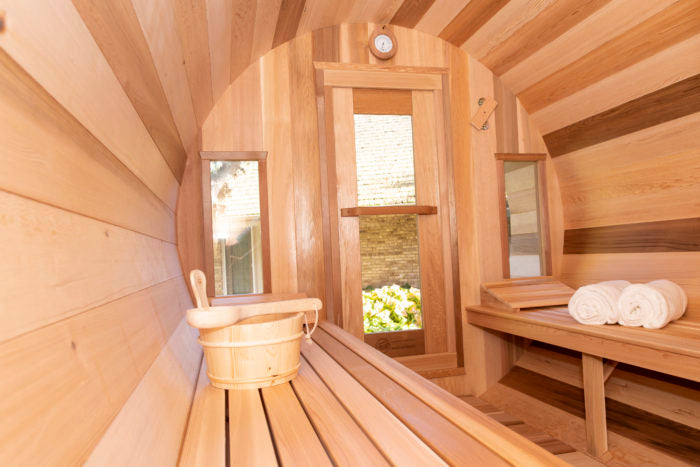The Single Strategy To Use For Traditional Sauna
The Single Strategy To Use For Traditional Sauna
Blog Article
The Best Guide To Traditional Sauna
Table of ContentsTraditional Sauna for BeginnersOur Traditional Sauna PDFsHow Traditional Sauna can Save You Time, Stress, and Money.The Basic Principles Of Traditional Sauna What Does Traditional Sauna Mean?
A lot of the weight lost in a sauna is water loss and is re-gained upon rehydrating. Nonetheless, undeniably sauna can be a fundamental part of a healthy weight management program. To consider the differences between typical and IR saunas, I will certainly separate these into verifiable, theoretical, and fabricated distinctions.Thus, the hottest factor in the saunawhich goes to the ceiling straight above the sauna heateris normally in between 185 and 190 F. Claims that a traditional sauna goes beyond 200 F is just not real and not applicable for electric saunas sold in the United States. The temperature level for a far-infrared sauna is generally established in between 120 and 140 F; nevertheless, unlike the standard sauna, the objective in and IR space is not to attain a heat.

When a typical sauna has been effectively warmed, the sauna wall surfaces are cozy, the air temperature level has achieved set temperature level and the rocks are extremely warmed. As a fascinating side note, the warmed wall surfaces and the rocks are discharging far-infrared heat, incorporated with the heated air, to develop an "enveloping warm".
Traditional Sauna for Dummies
When the high temperature is achieved, the components cycle on and off to preserve the heat. Most traditional sauna individuals delight in putting water over the rocks to develop steam to elevate sauna humidity degrees. The benefits of putting water over the rocks consist of: making the area a lot more comfortable, moistening the nasal passages, and enabling the use of aromatherapy by mixing vital oils with the water.

When the energy gets in the body, it causes the body temperature to increase and inevitably causes perspiration. In an infrared sauna it is essential for the emitters/heaters to continue to be on nearly regularly. Given that there is no mass of rocks to maintain warm, the sauna will certainly cool if the emitters shut down.
Traditional Sauna for Dummies
As discussed above, the sauna bather in an infrared area desires to position himself before running emitters to obtain optimal gain from the warm. The home heating time for both areas can be really various, depending on exactly how the spaces are made use of. For a traditional sauna, a bather must enable 30-40 minutes for the space to achieve a desired temperature level and to correctly pre-heat the rocks.

A well created sauna will generally accomplish a temperature of 150-160 F in about 30-40 mins. For hotter temperature levels, the space may require to heat for a longer duration.
To some, 15 minutes was "lost" while the infrared energy warmed the wood panels instead than heating a body, while others locate a pre-heated room to be a lot more comfortable and think a raised beginning temperature level is needed to start perspiring. The size of recommended usage for each room is around the exact same (10-15 minutes per session); nonetheless, because of the reduced air temperatures and the ability to feel the effects of infrared warm quicker than a typical sauna, it is not unusual for an individual to invest a total amount of 20-30 minutes in an infrared sauna.
9 Easy Facts About Traditional Sauna Explained

The typical cost per kWH of power in the united state is around $0.11, so a 4.5 kW heating unit will certainly set you back approximately $.50 to run Find Out More for one hour, if the heating unit runs continuously for one hour. Commonly a sauna heating system will certainly compete 75% of the very first hour and 50% of subsequent hours on given that the elements cycle once the set temperature level is achieved.
A 2 individual far-infrared room is typically physically smaller than a traditional sauna, usually concerning 4' x 4' or smaller sized. The IR heating unit is typically 1.5-1.7 kW utilizing a 120 volt 15 amp plug-in solution. Given that the space can be utilized faster than a sauna space, we will presume the space is used for to of an hour including warm up time.
Ultimately, there is a hardly ever discussed distinction in the social experience between both areas. While our culture has lost a few of the social advantage of the traditional sauna experience, it can be extremely socially rewarding (Traditional Sauna). From family members time in the sauna, to heart-felt conversations with substantial others, to sauna partiesthe typical sauna experience can bring about intimate socializing
Our Traditional Sauna Statements
A lot of higher end infrared rooms include tinted light therapy, noise systems and full-glass fronts.
Report this page